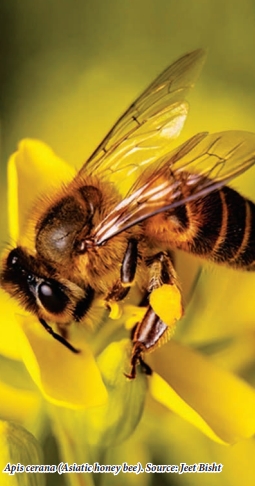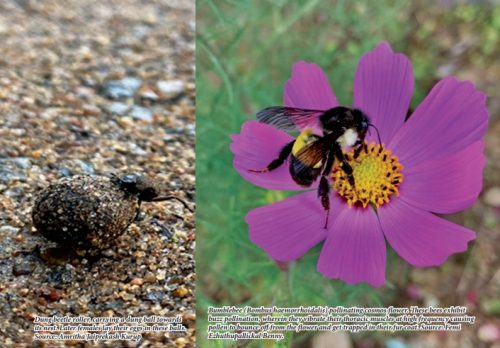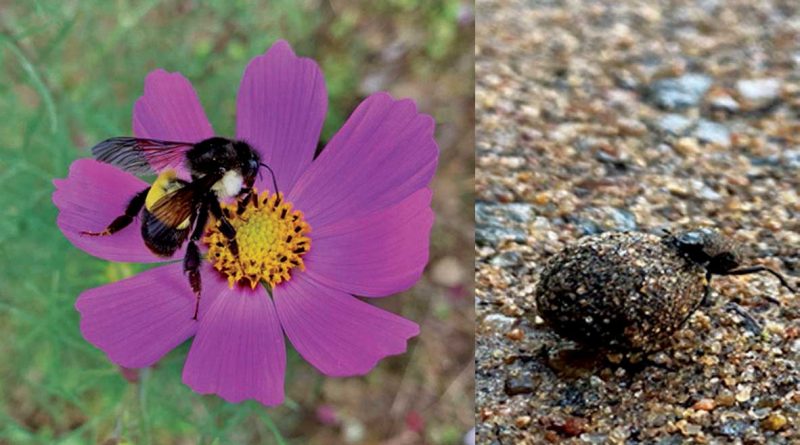Moving Beyond “Creepy Crawlies”

 Growing up in a small village in Kerala, we were closely connected to nature and taught to appreciate all living things, including insects. However, not all insects were treated equally. A vivid memory is the appearance of alates (winged termite swarms) at the onset of monsoon, especially after the first showers. Alates would swarm around lights at night, often falling into our kanji (a rice porridge staple). As children, we found this disgusting and demanded the dish be replaced. Now, as an entomologist, I understand that alates are clean, emerging after first showers only to mate and then die. Recently, after the summer showers in Bengaluru, I was having tea and fried snacks when an alate fell onto my plate. I simply picked them out and continued eating. The tea shop owner offered to replace my plate, but I proudly declined, knowing it was not a big deal. Now that’s what awareness and proper education about insects has done to me- a vicissitude in perception! In the urban landscape that dominates much of our lives, insect encounters are often limited to fleeting glimpses of houseflies, the annoying buzz of mosquitoes, or the petrifying sight of cockroaches scuttling across the floor.
Growing up in a small village in Kerala, we were closely connected to nature and taught to appreciate all living things, including insects. However, not all insects were treated equally. A vivid memory is the appearance of alates (winged termite swarms) at the onset of monsoon, especially after the first showers. Alates would swarm around lights at night, often falling into our kanji (a rice porridge staple). As children, we found this disgusting and demanded the dish be replaced. Now, as an entomologist, I understand that alates are clean, emerging after first showers only to mate and then die. Recently, after the summer showers in Bengaluru, I was having tea and fried snacks when an alate fell onto my plate. I simply picked them out and continued eating. The tea shop owner offered to replace my plate, but I proudly declined, knowing it was not a big deal. Now that’s what awareness and proper education about insects has done to me- a vicissitude in perception! In the urban landscape that dominates much of our lives, insect encounters are often limited to fleeting glimpses of houseflies, the annoying buzz of mosquitoes, or the petrifying sight of cockroaches scuttling across the floor.
These encounters, coupled with societal perceptions that connect insects to scary creatures, have shaped a widespread aversion towards insects, restricting them to the derogatory labels of “creepy crawlies” or “bugs.” However, beneath these dismissive epithets lies a profound ignorance of the role insects play in sustaining life on Earth. Since there is a dynamic decline in insect diversity as well as their population contributed by habitat loss, conventional agricultural practices, climate change and environmental pollution, it’s time to address these matters of concern for ecosystem health. Public awareness and dialogue on the importance of insects are crucial at the moment to change this narrative, especially in India, hosting a vast diversity of insects. It’s imperative to come out of these prejudiced notions that consider insects as ugly and recognize the remarkable ecological services that insects provide. Without them, agricultural systems would crumble, leading to food shortages and economic instability.
A well-known example of insect ecosystem services is the case of rusty patched bumblebee (Bombus affinis) in the United States, where the insect faced a dramatic decline due to habitat loss, pesticide use, and disease, severely impacting the pollination of crops like tomatoes, blueberries, and cranberries. To counter this, conservation groups such as the Xerces Society for Invertebrate Conservation initiated programs to reintroduce the species through habitat restoration, reduced pesticide use, and breeding and releasing efforts, resulting in increased crop yields and enhanced biodiversity. Insects also serve as nature’s recyclers and decomposers, breaking down organic matter and thereby replenishing nutrients in the soil, bolstering the health of ecosystems worldwide. For example, in the 1800s, European settlers introduced cattle to Australia, but the absence of native dung beetles in Australia, capable of processing cattle dung led to dung accumulation, increased parasitic infections, and economic losses in the cattle industry.
To address this, scientists introduced dung beetle species from Africa and Europe in the mid-20th century, which effectively decomposed the cattle dung, thereby improving soil fertility, reduced parasite and pest populations, and boosted the cattle industry’s productivity. This historical event is one of the several testaments to the ecological role of dung beetles and the broader role insects play in maintaining ecosystem health. The role of insects as predators and parasitoids of agricultural pests, and thus preventing yield loss are also not widely acknowledged. Beyond their ecological significance, across cultures and cuisines, insects have long been consumed as a sustainable and nutritious food. For example, for several indigenous communities spread across India (Nagas of Nagaland, Adi and Aptani’s of Arunachal Pradesh), insects are a valued source of food and traditional medicine. Rich in essential nutrients such as protein, vitamins, and minerals, insects offer a viable solution to the current global challenges of food security and the unsustainable reliance on conventional livestock farming.
 As we recognize the urgent need for alternative protein sources in the wake of climate change, population explosion and environmental degradation, the importance of insects as a dependable food source cannot be overstated. People’s participation and public awareness are two strong shields we can use to shift the standpoint of insect disgust! Insect walks, workshops, educational talks, campaigns to learn about local insects’ diversity, insect friendly gardening and so forth are few ways through which we can get to know these amazing beings. Photography, creating simulation experiences about insects and their environment, organizing festivals to commemorate beauty and roles of insects are also equally important in establishing and popularizing their uniqueness and significance. Earlier, we marveled at the glittering dance of fireflies under a starry sky. Butterfly wings, fluttering in silent grace, mesmerized us, and the cicadas’ rhythmic clicks sparked our curiosity. Nevertheless, the initial awe has dimmed, replaced by a distorted view of insects. But it’s time to retrain our eyes, to shed those unsettling images and rediscover the captivating wonders these creatures truly are. As we face the climate crisis, protecting and conserving insects becomes even more crucial for a healthy and sustainable future.
As we recognize the urgent need for alternative protein sources in the wake of climate change, population explosion and environmental degradation, the importance of insects as a dependable food source cannot be overstated. People’s participation and public awareness are two strong shields we can use to shift the standpoint of insect disgust! Insect walks, workshops, educational talks, campaigns to learn about local insects’ diversity, insect friendly gardening and so forth are few ways through which we can get to know these amazing beings. Photography, creating simulation experiences about insects and their environment, organizing festivals to commemorate beauty and roles of insects are also equally important in establishing and popularizing their uniqueness and significance. Earlier, we marveled at the glittering dance of fireflies under a starry sky. Butterfly wings, fluttering in silent grace, mesmerized us, and the cicadas’ rhythmic clicks sparked our curiosity. Nevertheless, the initial awe has dimmed, replaced by a distorted view of insects. But it’s time to retrain our eyes, to shed those unsettling images and rediscover the captivating wonders these creatures truly are. As we face the climate crisis, protecting and conserving insects becomes even more crucial for a healthy and sustainable future.


